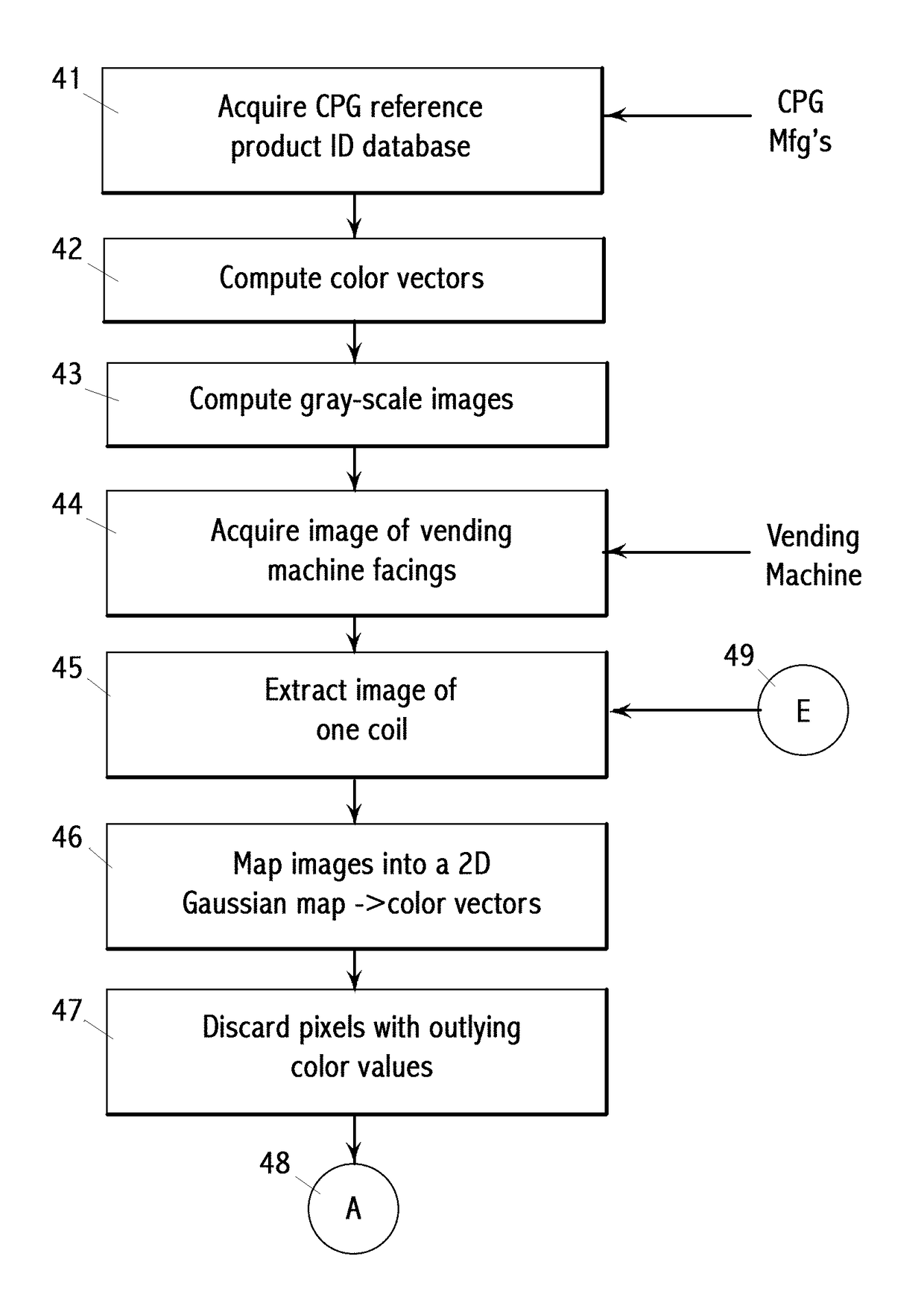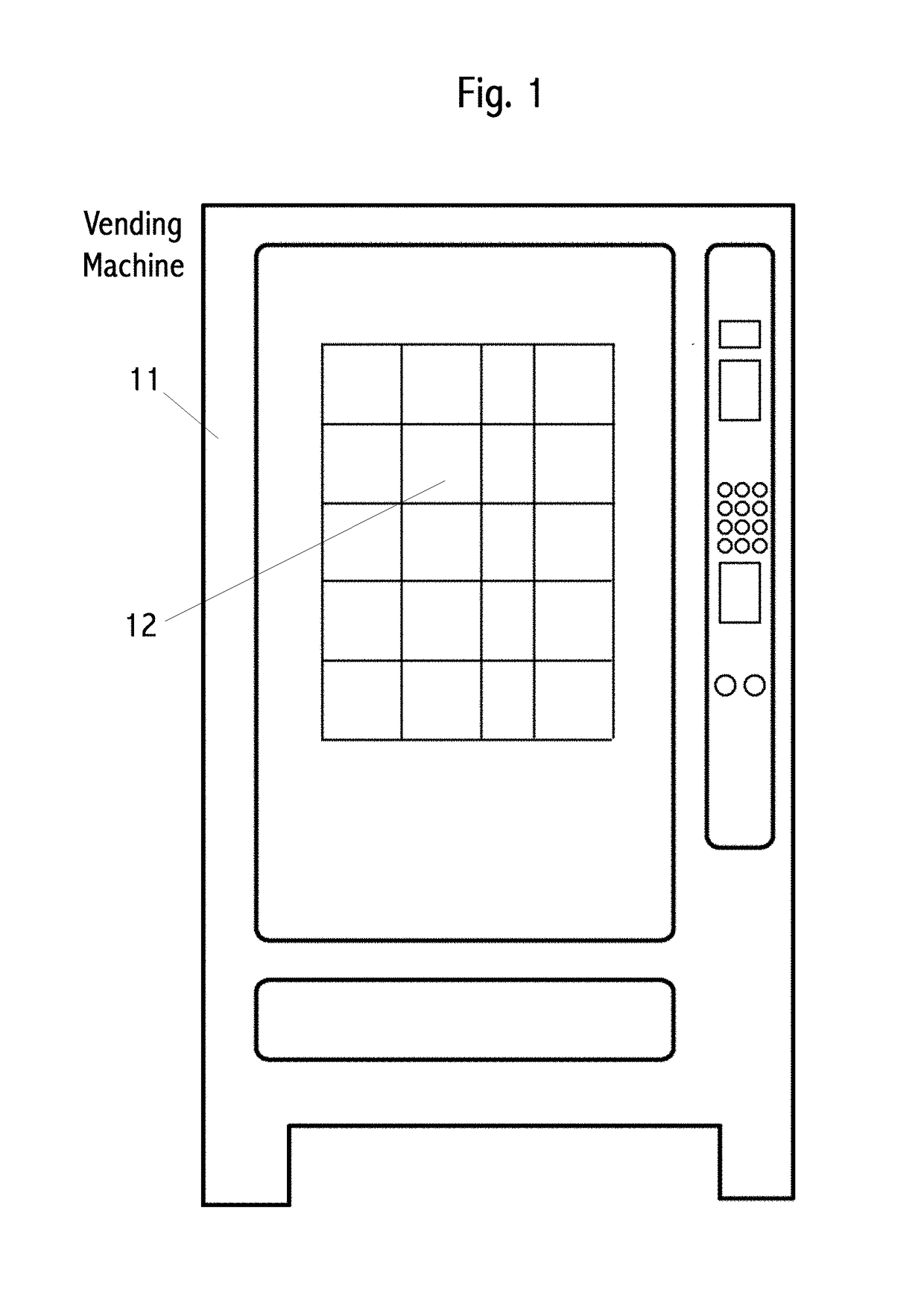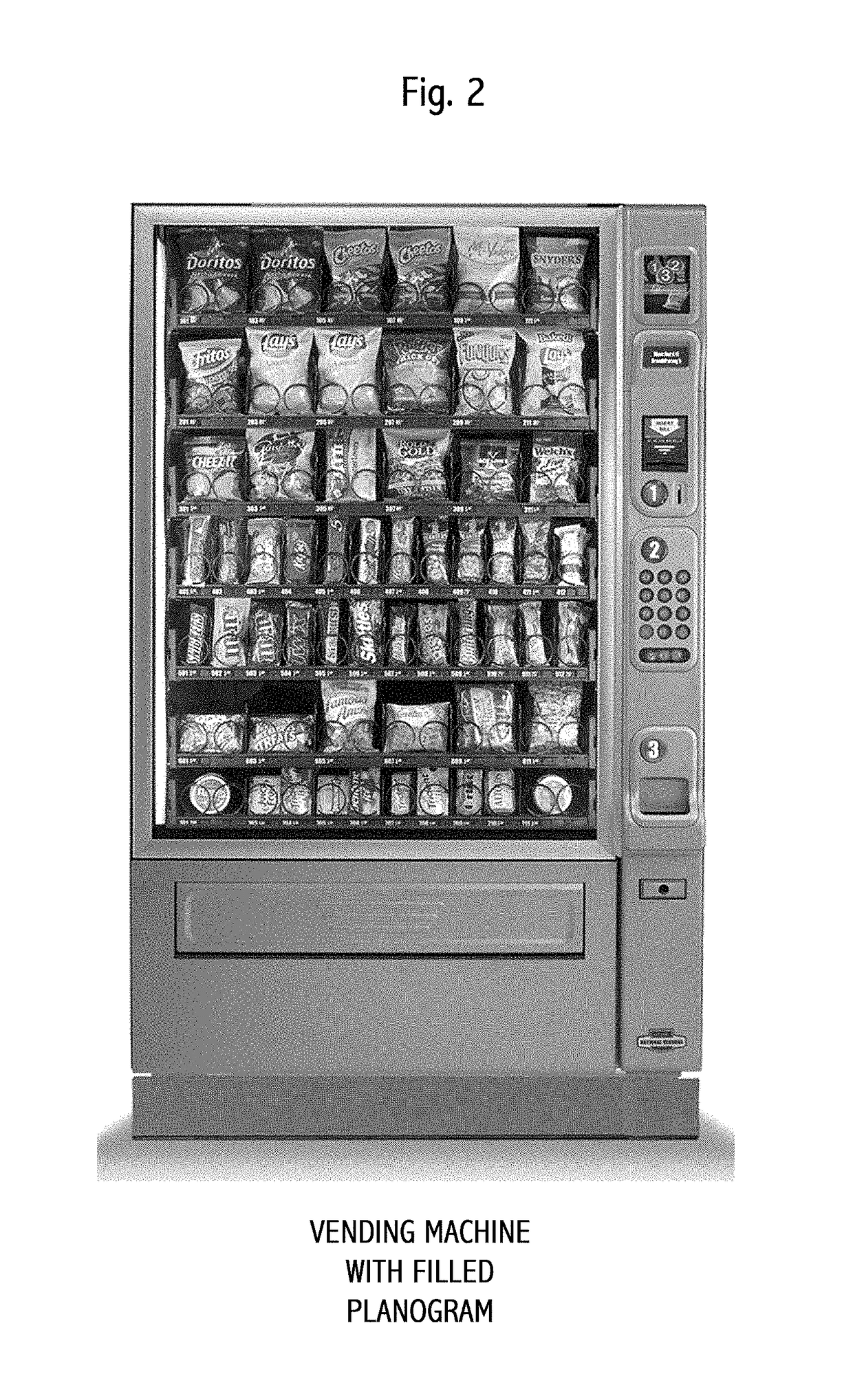Method and device of automatically determining a planogram in vending
a planogram and automatic determination technology, applied in the field of vending machine service, can solve the problems of slow execution of prior art image comparison techniques, ineffective use of prior art machine vision techniques, and inability to accurately determine the product inventory in the vending machine, so as to reduce the number of reference images, reduce the impact of hue and saturation, and efficiently identify
- Summary
- Abstract
- Description
- Claims
- Application Information
AI Technical Summary
Benefits of technology
Problems solved by technology
Method used
Image
Examples
Embodiment Construction
[0053]A vending company may manage thousands of vending machines. A vending machine may have roughly 20 to 200 CPG products. A CPG database may have thousands or even millions of images. The number of features detected or extracted by a feature detection / extraction algorithm may be in the hundreds of thousands. Running a single feature detection / extraction algorithm on a pair of images may be millions or billions of computer instructions. Thus, without some method steps to limit, cull or prune intermediate lists size or times a step must be executed the computational requirements are excessive, even for modern computers. Consider the product of: the number of vending machines times number of coils in a vending machine times size of the CPG database times multiple feature detection / extraction algorithms times number of features detected by each.
[0054]Note that “feature detection” is largely but not exclusively creating “keypoints” in a single, single-valued-pixel image. Such keypoint...
PUM
 Login to View More
Login to View More Abstract
Description
Claims
Application Information
 Login to View More
Login to View More - R&D
- Intellectual Property
- Life Sciences
- Materials
- Tech Scout
- Unparalleled Data Quality
- Higher Quality Content
- 60% Fewer Hallucinations
Browse by: Latest US Patents, China's latest patents, Technical Efficacy Thesaurus, Application Domain, Technology Topic, Popular Technical Reports.
© 2025 PatSnap. All rights reserved.Legal|Privacy policy|Modern Slavery Act Transparency Statement|Sitemap|About US| Contact US: help@patsnap.com



